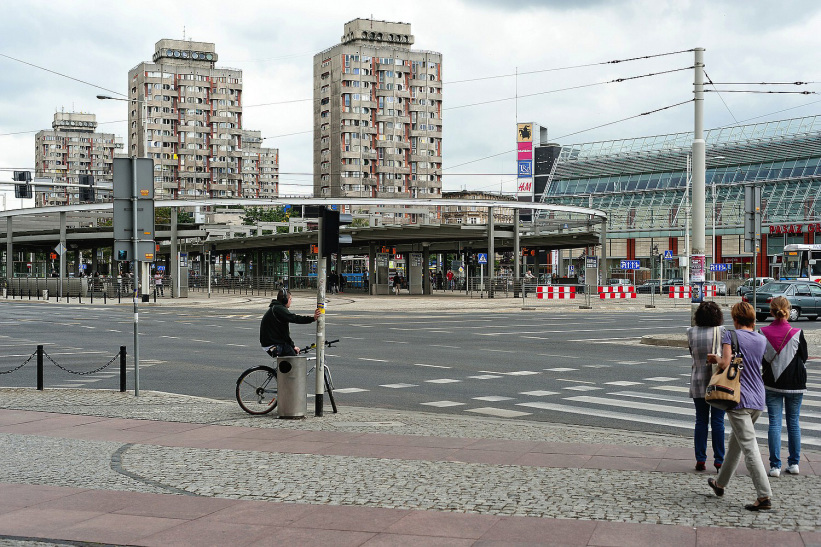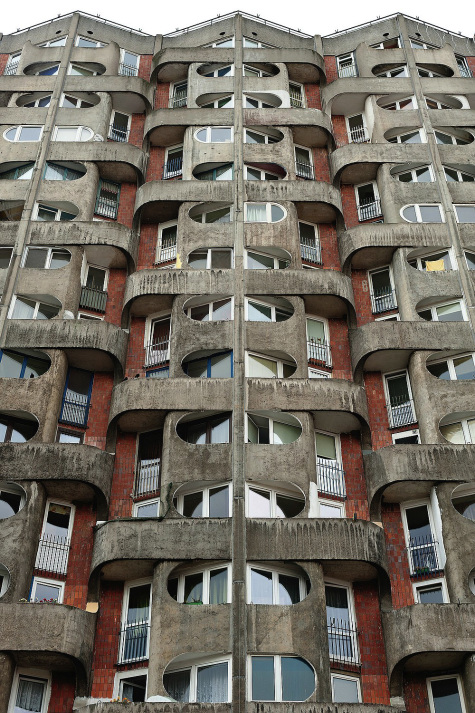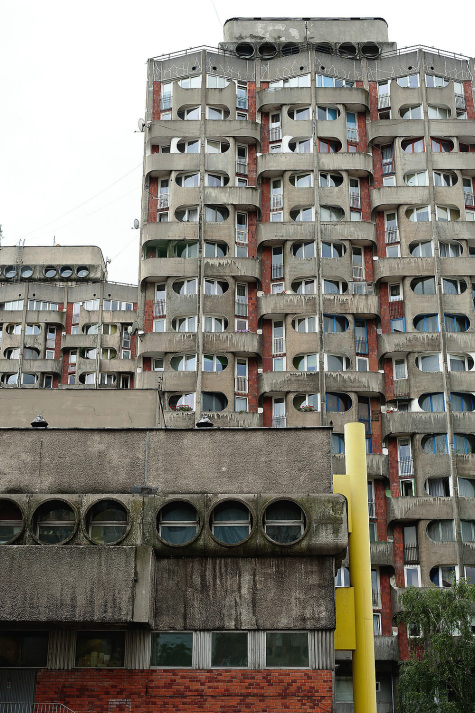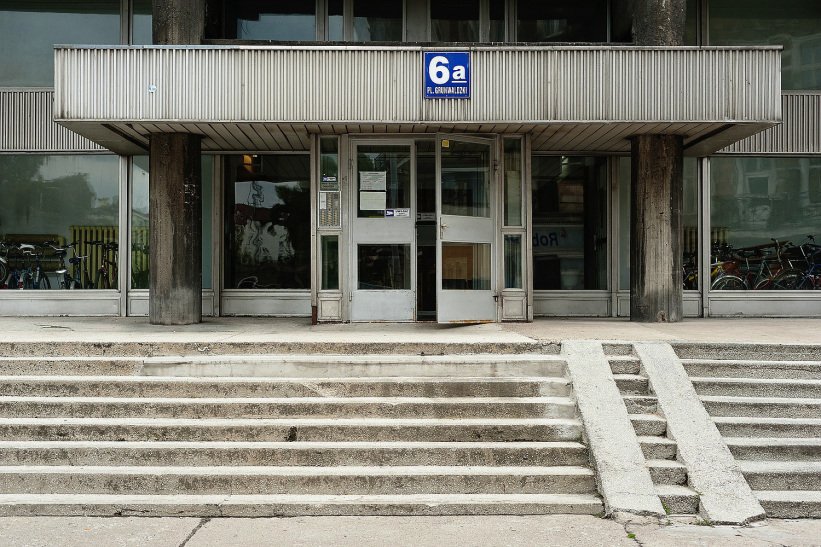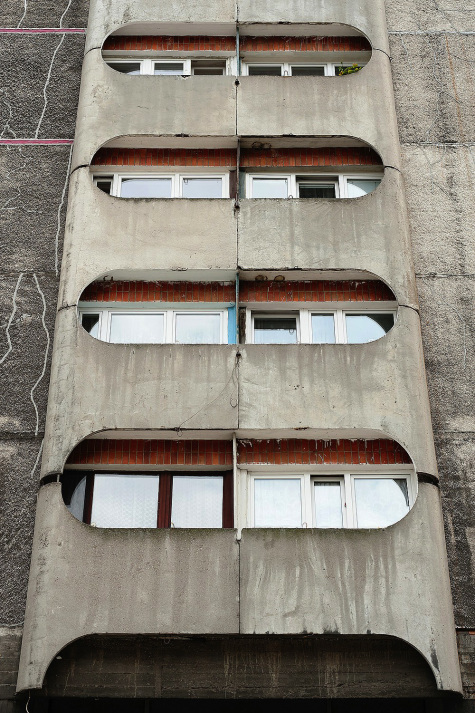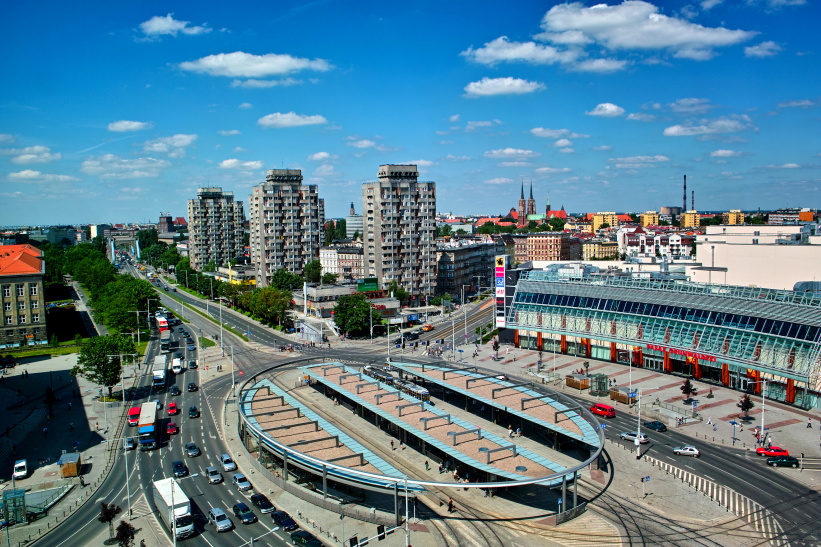Jadwiga Hawrylak-Grabowska / Zdzisław Kowalski / Włodzimierz Wasilewski: Grunwald Estate, 1967C–1975
- Wroclaw, Poland, Show on map
- #RES #InfitniteRepetition #Highrise #Eastern Europe
-
The project is said to be inspired by Le Corbusier. Construction was stopped by the government 1972, supposedly because of its avantgarde appearence. Today the complex is nicknamed “Manhattan” by locals.
-
Heritage protected, but affected by conversion work. The complex has already undergone a series of renovations. The façades of the high-rise residential buildings were renovated in 2016. In the process, the gray exposed concrete disappeared under insulation and finally a coat of white paint. This is said to have been done with reference to the architect's original plans: Here, the façade had originally been planned with white concrete, which was to be complemented by red tiles and planting on the balconies. However, the red tiles disappeared completely during the 2016 renovation. Due to financing problems, the two-storey plinth zone of the complex, which houses stores, was left out of the renovations. This part of the building was partially demolished in January 2021—apparently in agreement with the monument protection authorities—due to the poor condition of the building structure: dirt, defacement from advertising banners, damp and cracks in the concrete slabs were prevalent here. The technical condition had even posed a danger to users in the pedestrian zone. The demolition work was accompanied by protests from residents, local media and Wroclaw activists. Now the complex is to be renovated again by 2029 as part of an ambitious renovation program called “PoWROty kamienien”. According to media reports, the program aims “to restore the splendour of the city's architecture and improve the living conditions of its residents.” We do not know how the Grunwald Estate will be changed in the process.
This building was included in the red list, published in our exhibition catalog SOS Brutalism: A Global Survey (September 2017). After a status review on November 12, 2024, it was reclassified in the online database from red (endangered) to red-blue (endangered and listed).
